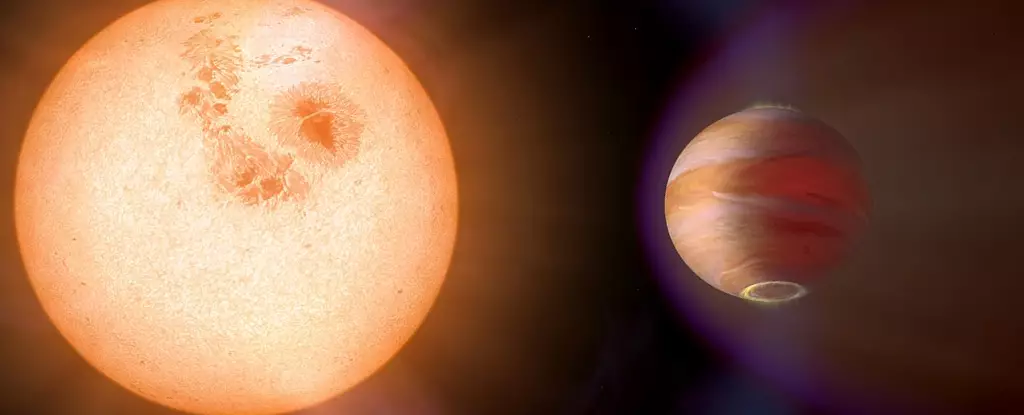Stars, those radiant orbs flickering across the cosmos, boast a variety of elemental compositions, known as metallicity. Recent advancements in astronomical techniques allow scientists to measure this metallicity with remarkable precision. Researchers are now delving deeper into understanding why some stars formed in the same stellar nursery exhibit significant differences in their metal content. An intriguing hypothesis suggests that the remnants of rocky planets that were engulfed by their parent stars may hold the key to unraveling this mystery.
Co-natal stars are fascinating astronomical subjects, born from the same giant molecular cloud (GMC). These stars emerge from the same primordial gas and dust, which leads us to expect comparably similar metallic compositions. However, reality often defies expectations. While small variations in metallicity are common, pronounced differences prompt scientists to search for alternative explanations. Researchers Christopher E. O’Connor and Dong Lai have contributed to this discourse with their latest research, identifying rocky exoplanets as potential culprits behind the metallicity discrepancies observed in co-natal stars.
The Role of Metal Pollution
O’Connor and Lai’s research, titled “Metal pollution in Sun-like stars from destruction of ultra-short-period planets,” highlights the phenomenon of metal pollution in stars—a process akin to what is observed in white dwarfs. Their investigation suggests that ultra-short-period (USP) planets, which orbit their stars in mere hours, might be the source of this pollution. These rocky planets, typically no larger than two Earth radii and possessing compositions similar to Earth, are subjected to extreme conditions, including high temperatures and tidal locking.
Their study relies on various models that predict the likelihood of these USPs being engulfed by their host stars. The authors found that 3 to 30 percent of co-natal, main-sequence Sun-like stars consumed rocky planets in their formative years. This planetary consumption, while hypothesized, raises further questions about the processes that allow such interactions to occur.
Engulfment Dynamics
To comprehend how rocky planets can be consumed by their stars, O’Connor and Lai explore three main migration scenarios. The first is the high-eccentricity (high-e) migration, where a planet’s orbit becomes exceptionally elliptical, leading to eventual close encounters with the star. Another is obliquity-driven migration, wherein a companion planet’s gravitational influence disturbs the orbit of the USP, causing it to spiral inward toward its star.
Their models suggest that USP engulfment is a tangible consequence of low-eccentricity migration, particularly in compact multi-planet systems. This concept aligns with the data gathered, indicating that USPs may not only form but also meet a fiery end soon after their birth, leading to the metallicity pollution observed in some stars.
O’Connor and Lai’s findings propose a direct correlation between the devastation of rocky planets and the pollution of stars. Approximately 5 to 10 percent of polluted Sun-like stars are expected to host a transiting planet with characteristics akin to a small USP. Such stars may demonstrate modest, albeit significant, deviations in their elemental compositions due to the ingestion of planet material.
However, the researchers caution against an oversimplified view of stellar pollution. They acknowledge that metallic signatures from ancient engulfments can fade over time, potentially skewing our understanding of star populations. Their study hypothesizes that, should these fading processes be more aggressive than anticipated, a larger proportion—possibly over 30 percent—of Sun-like stars may, in fact, exhibit signs of metallic pollution.
Among other points considered, the role of Hot Jupiters (HJs) in this stellar narrative deserves attention. These massive gas giants, with orbits dangerously close to their stars, could also contribute to metallicity pollution during their lifecycles. However, O’Connor and Lai argue that high-e migration patterns, while potentially inducing HJs into engulfment, may not create the same metallic signatures as rocky planets due to their differing elemental compositions.
As they explore these dynamics, they note that engaging with HJs opens further questions about stellar evolution and interactions within planetary systems. Can a star’s evolution toward engulfment be more nuanced than simply accounting for rocky planets alone? Understanding these interactions may provide insights into how diverse stellar environments shape the chemical fingerprints of stars.
The Path Forward in Stellar Research
O’Connor and Lai’s extensive research underscores the intricate relationships between stars and their surrounding planetary systems. Their findings call for a multifaceted approach in future studies, emphasizing the need for greater scrutiny in understanding star-planet interactions. As our ability to measure and analyze the properties of distant celestial bodies improves, the questions surrounding metallic pollution and its implications on stellar evolution will become ever more critical to our comprehension of the cosmos.
The cosmic dance between stars and planets yields complexities that challenge our current knowledge. Research like that of O’Connor and Lai endeavors to shed light on these enigmas, offering potential answers to questions that bridge numerous disciplines within astronomy. Understanding the fate of rocky exoplanets in the high-stakes environment of stellar evolution opens a new realm of possibilities, inviting ongoing inquiry into the universe’s richly woven tapestry.


Leave a Reply